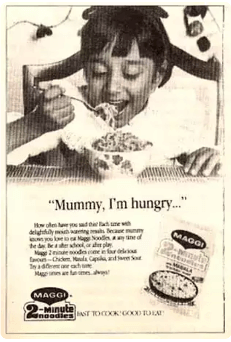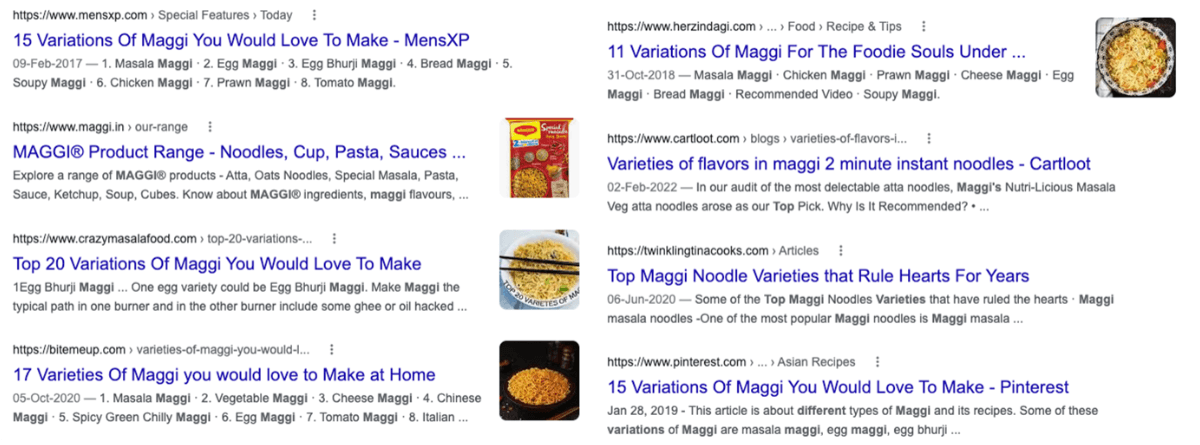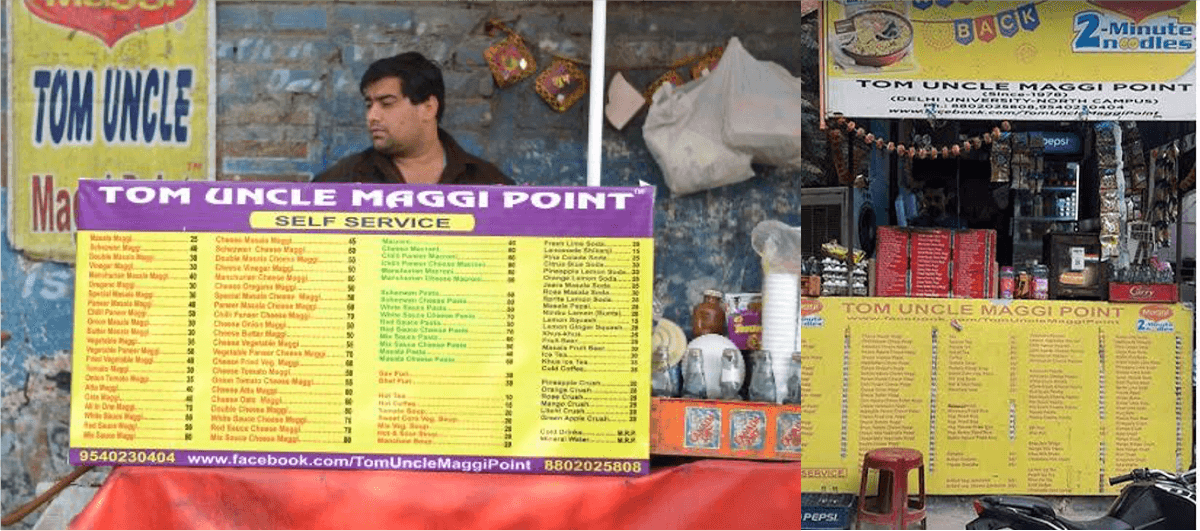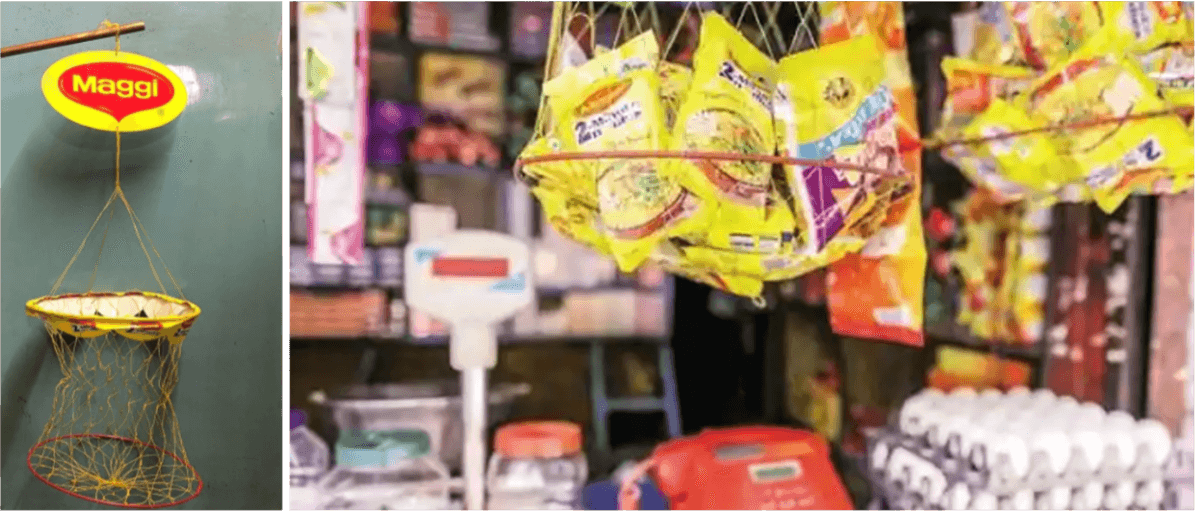For kids born in the 80s, one of the most enduring memories of childhood and later on, of college, would be hot steaming bowls of Maggi noodles served on multiple occasions – as a treat, as a late-night hunger saviour, as a go-to SOS snack or as a base for exciting culinary experiments.
A versatile food product, Maggi has had an eventful journey in India. Over the years, Maggi, a brand that built its reputation on selling “instant” noodles, has created a brand love that has lasted a lifetime for many Indians.
How did it do it?
Origins
Maggi originated in Switzerland in 1882 as a response to a very practical problem.
The industrial revolution in Switzerland in the late 1800s attracted more women to factory jobs, leaving them with little to no time to prepare meals. To solve this, an entrepreneur named Julius Maggi created a food product that would be quick to prepare and easy to digest.
Julius launched the Maggi brand of instant foods in 1882. The brand grew from strength to strength from there, until it merged with Nestle in 1947. Nearly 4 decades later, in 1983, Nestle launched Maggi noodles in India, thus starting the generations-long romance of Indians with that brand.
Initially, Maggi faced the uphill task of establishing a new category. The texture and nature of the product (noodles) were alien to Indian palates. The first and foremost challenge before Maggi was to establish its relevance by positioning itself correctly.
This is where snack time became important.
“Mummy, Bhook Lagi hai!”
The brand team found that snacking occasions, when kids came home after school or play, offered an interesting opportunity to uniquely position the brand.
On these occasions, most moms struggled with time to cook snacks for their kids. Kids weren’t ready to wait and mothers were hesitant to offer them packaged/ready-made food, which was seen as unhealthy.
A classic situation of tension.
And Maggi saw an opportunity to position itself as the ultimate solution for this tension.
The Maggi brand team decided to portray Maggi as a hot, freshly cooked snack that moms could serve with love to satisfy their child’s hunger. Maggi would thus become an Indian mom’s answer to their child’s emotional call of “Mummy, bhook lagi hai!”
Interestingly, almost since its inception, Maggi presented itself as a snack that can be cooked with vegetables. This allowed moms to camouflage a serving of vegetables for the kids, who happily devoured them without the usual complaints. This gave moms another reason to serve Maggi to their kids.
The kids were delighted with their delicious noodles snack and enjoyed playing with the strands as they dug in hungrily. The vegetables were seen as adding wholesomeness to the dish, which delighted the moms as well.
It is critical to get brand positioning absolutely right when it comes to building lasting brands. Read more about how to get brand positioning right in our previous article on the subject. (read here)
Establishing Category Codes
The articulation that Maggi chose for its positioning was also quite interesting and helped its adoption considerably. Being a category pioneer, the brand could have pitched itself as an exotic snack or a special treat. However, in line with consumer insight, Maggi picked a creative hook that would unambiguously resolve the issue faced by moms when they were dealing with hungry and impatient kids.
Hence the “2-minute noodle” proposition, which was a masterstroke.
Remember, Maggi was not only launching a new product in India, but it was also creating a new category. It had to establish the category codes, make the target consumers understand them, and then own those codes in their minds.
Maggi achieved it by focusing on the time it would take to cook the ingredients, putting 2 min boldly everywhere, including the pack. It also added an easy-to-follow pictorial representation of how to cook that brought to life the “2 min noodle” promise.
Maggi also had the brand-building patience to stick with this positioning for decades, thus owning the enduring ‘2-min proposition’, that continues to be as relevant today as it was during its launch phase:

A versatile hero for the masses
Maggi soon became a default go-to dish for even non-regular cooks in the home- dad and kids- whenever they wanted to whip up something in the kitchen.
The ease and versatility of Maggi lent to culinary experiments among both novices and experts cutting across generations and occasions, spawning a food culture of its own.

A veritable cottage industry also sprang up, where self-styled street vendors became “Maggipreneurs”, offering a variety of Maggi-based dishes. With their creative thinking being the only limitation, these entrepreneurs tried more variations of Maggi than the Nestle R&D department could ever do.
Maggi’s success lay in creating a hero product that was so versatile that it was adopted by the masses as their own. Every time a street vendor took a fresh packet of Maggi, opened it and used it to mix and create his own recipe in front of his audience, it acted as a sampling occasion that a corporate brand could only dream of.

Communication that reinforced its positioning
Over the years, Maggi consistently spoke about its positioning in the form of different campaign ideas. The central theme of establishing Maggi as a tasty in-between meal hasn’t changed much, though the brand has continued to contemporize it.
When the first generation of “Maggi kids” grew up and went off to college, Maggi began to add the element of nostalgia into the mix in interesting ways:
As the brand completed 25 years in India, it launched a massive 360-degree campaign to celebrate this milestone, capitalizing on the sweet nostalgia it held for young and old alike. Launched way back in 2012, it was one of the earliest examples of crowdsourced campaigns by a major national brand. The campaign featured Amitabh Bacchan who asked consumers to share their favourite memory with Maggi. The weight of a national icon backing this campaign made it all the more popular and Maggi’s FB page was flooded with memories and recipes shared by excited consumers.
Over time as Maggi found health becoming a megatrend, it unveiled its #HealthIsEnjoyable campaigns featuring Madhuri Dixit, to launch its healthier range of products like Oats and Veg Atta Noodles. Madhuri’s image as a vibrant, fit new mom was a perfect aspirational match for the target segment Maggi was aiming for.
Below the line activations that drove affinity
Maggi as a brand has always been cognizant of its mass appeal, and spent just as much attention on BTL activations as on its TV ads.
One of its first innovations was aimed at increasing visibility and offtake from shelves. Maggi pioneered the concept of hanging baskets in mom-and-pop retail outlets. These distinctive and well-branded baskets were to be hung up above the countertops in these stores, in such a way as not to take up actual countertop space, but to drive instant visibility and awareness nevertheless¹.

Maggi also drove sampling in schools during its early days, which was one of the first times a national brand had done it in India. This not only gave legitimacy to the sampling (after all, the school teachers had given permission) but it also focused the entire sampling process amongst the right target group, with no leakage.
Another activation that clicked for Maggi was the introduction of the Maggi Fun Book for children. This was a small book packed with interesting things to do for kids, including puzzles, games, interesting factoids, stories, comic strips, etc.
Building on this idea of affinity building amongst kids, the Maggi Club was introduced. The club would send out at least three mailers a year, including paper games ideal for summer holidays, ideas on how to stir up simple recipes using Maggi, making birthdays more fun with innovative party games, snacks, etc.²
Maggi has also leveraged pack sizing and pricing to drive both penetration and frequency of usage. It introduced multipacks to entice value-seeking consumers. Later on, in 2005, it launched Rs 5 Maggi packs to drive penetration in Tier 2-3 towns and rural areas³.
Crisis – the MSG controversy
After decades of enjoying a good run, Maggi ran into a potentially brand-ending crisis in 2015.
In 2014, food safety regulators reported that samples of Maggi Noodles had high levels of MSG (Monosodium glutamate) despite the “No Added MSG” claim besides having lead content above the permitted level.
Then FSSAI (Food Safety and Standards Authority of India) asked Nestle to recall Maggi noodles. Maggi, which had been enjoying a near monopoly in the market with close to 60% market share, saw its share plummet to zero⁴.
This crisis was shocking, and the worst ever in its history.
But Maggi managed to claw its way back to life purely on the dint of the brand equity it had built up over the decades. Even when it was banned, it kept its social media page active and remained in touch with its consumers.
In November 2015, six months after being banned, Maggi cleared all legal hurdles to come back to the market.
They kicked things off with an emotional WELCOME BACK ad. Maggi tied-up with e-commerce platforms to sell welcome kits prior to the actual launch date.
The response was overwhelming. Snapdeal sold out its 60,000-strong Maggi WelcomeKit stock in a mere 5 minutes⁵.
Maggi’s market share rose back to its previous 60% (in value terms) in just two years⁶.
Maggi’s return to glory is a testament to the strong brand and memory structures it had built in the minds of consumers over decades.
The future – Maggi’s continuing journey
With its deep penetration and familiar taste, Maggi has become a kitchen staple.
However, the brand has not sat quiet on its laurels and has constantly tried to expand the Maggi portfolio beyond the classic Masala flavour by adding variants. While some of the variants like Chicken and Atta Noodles have become successful, some others like Dal-Atta (Sambhar Taste) weren’t well-received and even withdrawn. Recently, the brand collaborated with KFC to launch a limited-period offering of KFC Maggi popcorn bowl, combining two popular fast-food formats.⁷
It will be quite exciting to see how Maggi will play the product innovation game in the coming future. Launching variants in a product whose USP is the familiar taste might need a tough balancing act.
Overall, Maggi is a case study in brand building because it brings forth the importance of marketing fundamentals- mining a great consumer insight, turning it into a well-differentiated and relevant positioning and executing it with a fresh consistency over more than 3 decades. This is the real magic tastemaker of Maggi’s brand-building efforts that has not only helped it appeal to Indian taste palates across generations and geographies but has also helped it survive a crisis which would have destroyed lesser brands.
Sources:
- https://blog.aima.in/innovation-is-countering-inertia-of-change-sangeeta-talwar-former-managing-director-nddb/04/
- https://www.amazon.in/Two-Minute-Revolution-Art-Growing-Businesses/dp/0670091359/ref=sr_1_2?crid=13YQR2C0C0M83&keywords=2+min+revolution&qid=1674110440&sprefix=2+min+revolutio%2Caps%2C281&sr=8-2
- https://www.financialexpress.com/archive/maggi-more-than-a-2-minute-campaign/616926/
- https://www.indiatoday.in/business/story/nestle-unhealthy-food-controversy-looking-back-at-the-maggi-noodles-crisis-in-india-1810003-2021-06-02
- https://indianexpress.com/article/trending/trending-in-india/60000-maggi-welcomekits-sold-out-in-5-mins-round-2-up-on-nov-16/
- https://www.thehindubusinessline.com/companies/maggi-attains-over-60-market-share-touches-pre-crisis-level/article24613916.ece
- https://www.adgully.com/kfc-popocorn-bowl-made-with-maggi-the-cult-collab-we-ve-all-been-waiting-for-124782.html

One Response
Hey Guru,
Great post especially for new age marketers who may not appreciate the patience needed to build memory structures and want to constantly change messaging because they are bored or want to try something different for their own motivations.
A crucial element that I thought might help make the case stronger is the amount of media investment needed to make the positioning and proposition stick.